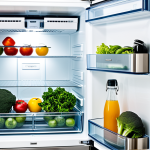Choosing Rare Vegetables for UK Greenhouses
Selecting rare vegetables UK for greenhouse gardening requires careful consideration of climate compatibility and growth requirements. The UK’s temperate climate means greenhouse conditions can be variable, so choosing unique greenhouse plants that tolerate cooler temperatures and fluctuating humidity is essential.
Successful varieties for UK greenhouse cultivation often include lesser-known options such as celtuce, oca, or turquoise tomatoes, which thrive in controlled environments yet suit local conditions. These unique greenhouse plants stand out for their novelty and adaptability.
Topic to read : Complete handbook for uk gardeners: mastering garlic cultivation with proven planting and harvesting strategies
Finding quality seeds or seedlings of rare vegetables UK can be challenging. Gardeners should seek specialist suppliers or seed libraries dedicated to uncommon varieties. Propagating from trusted sources ensures genetic viability and disease resistance, enhancing your rare vegetable gardening UK experience.
In essence, balancing plant hardiness, greenhouse microclimate, and reliable sourcing forms the cornerstone of thriving rare vegetable cultivation in UK greenhouses. This focused approach maximises success and satisfaction with unique greenhouse plants seldom found in regular garden centers.
Additional reading : Choose the right camouflage netting for any event
Optimising Your Greenhouse for Rare Vegetable Cultivation
Creating the right UK greenhouse setup is vital for thriving rare vegetables UK enthusiasts. Controlling temperature, humidity, and lighting directly impacts the growth of unique greenhouse plants. Given the UK’s variable climate, investing in reliable greenhouse equipment UK such as thermostats, humidifiers, and grow lights allows precise microclimate control.
Temperature should be maintained between 15°C and 25°C, with warmer conditions for heat-loving rare vegetables UK like certain peppers or eggplants. Humidity levels around 50-70% suit most uncommon plants; excessive moisture risks fungal issues while too dry stunts development. Using adjustable vents and automated misting systems helps regulate these factors effectively.
Soil preparation is equally crucial. Choose well-draining, fertile substrates enriched with organic matter to support root health. Containers should match plant size, with deeper pots facilitating robust root systems for rare vegetable gardening UK. Consider raised beds or troughs inside the greenhouse to optimise space and drainage.
In summary, a thoughtfully equipped UK greenhouse setup combined with attentive microclimate control and proper soil management creates an environment where rare vegetables UK can flourish despite external weather limitations. These techniques ensure your greenhouse gardening UK experience is both productive and rewarding.
Step-by-Step Guide to Cultivating Rare Vegetables
Cultivating rare vegetables UK successfully hinges on precise seed sowing and transplanting techniques tailored to each species. Start by consulting a greenhouse planting guide for the specific germination needs—some unusual varieties require stratification or soaking to break dormancy. Sow seeds in seed trays with a light, well-draining medium, maintaining consistent moisture and temperature in the greenhouse gardening UK environment.
Spacing is critical; overcrowding rare vegetables leads to poor airflow and heightens disease risk. Follow recommended distances from the guide, typically wider than for common crops, to give unique greenhouse plants room to flourish.
For vegetable propagation UK, transplant seedlings when they have two to four true leaves, hardening them off by gradually exposing them to greenhouse conditions. Support systems like stakes or cages may be necessary early on for sprawling or tall varieties to promote stronger stems.
Special cultural practices include regular feeding with balanced, organic nutrients tailored for slow-growing rare crops to boost resilience. Watering should keep soil moist but not waterlogged to avoid root diseases, and drip irrigation or bottom watering can improve efficiency.
Adopting these careful steps will foster healthy growth and maximise yields in your rare vegetable gardening UK journey.
Choosing Rare Vegetables for UK Greenhouses
When selecting rare vegetables UK for greenhouse gardening, compatibility with the UK’s cooler climate and variable conditions is paramount. Not all exotic varieties will thrive under typical UK greenhouse conditions. Gardeners should prioritise unique greenhouse plants that can tolerate moderate temperatures and fluctuating humidity to ensure consistent growth.
Successful rare vegetables UK often include crops like celtuce, oca, and turquoise tomatoes, which perform well in controlled environments while adapting to the UK’s microclimate. These varieties not only offer novelty but also robust growth under greenhouse gardening UK practices.
Sourcing genuine seeds or seedlings of these uncommon plants requires turning to specialist suppliers, seed exchanges, or dedicated rare vegetable nurseries. This ensures high-quality genetic stock and disease-resistant material, crucial for maintaining plant health in greenhouse gardening UK setups. Purchasing from trusted providers reduces the risk of introducing pests or weak varieties that may struggle in UK greenhouse conditions.
Overall, carefully matching rare vegetables to the greenhouse environment and sourcing trustworthy plants lays a solid foundation for successful rare vegetable gardening UK. This thoughtful selection boosts your chance of cultivating thriving, distinctive crops rarely found in typical UK gardens.
Choosing Rare Vegetables for UK Greenhouses
Selecting rare vegetables UK that thrive in greenhouse gardening UK demands attention to each plant’s specific environmental needs. The primary factor is compatibility with the UK’s cooler temperatures and fluctuating humidity common in glass or polycarbonate structures. Unlike common vegetables, unique greenhouse plants require adaptable genetics to withstand UK microclimates—often cooler nights and less intense sunlight.
Recommended varieties proven successful in the UK include celtuce, oca, and turquoise tomatoes, which balance novelty with resilience. These rare vegetables UK tolerate moderate warmth and humidity while offering uncommon flavours and appearances. Other promising options are certain heirloom beans and Asian greens, known for their compatibility with greenhouse gardening UK.
Sourcing true-to-type seeds or seedlings is essential. Specialist suppliers in rare vegetables UK and seed exchanges provide authentic strains that maintain desired traits. Purchasing from reputable sellers reduces the risk of disease and poor adaptation. For gardeners interested in unique greenhouse plants, participating in seed swaps or rare vegetable networks also helps access diverse genetic stock suited for UK greenhouse conditions.
By focusing on plant selection aligned with UK climate realities and sourcing reliable materials, gardeners lay the groundwork for successful rare vegetable cultivation in controlled environments.










